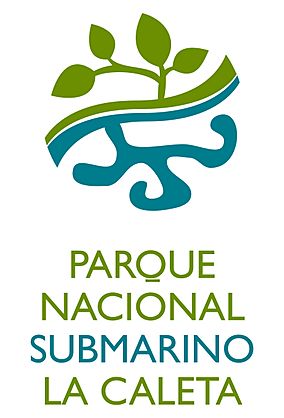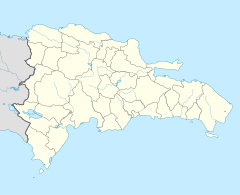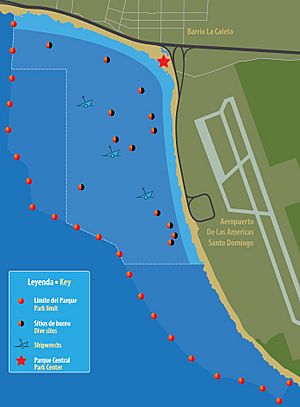Parque Nacional Submarino La Caleta facts for kids
Quick facts for kids La Caleta Underwater National Park |
|
|---|---|
|
IUCN Category II (National Park)
|
|
 |
|
| Location | Dominican Republic |
| Nearest city | Santo Domingo |
| Area | 12 square kilometres (4.6 sq mi) |
The La Caleta Underwater National Park is a special park found underwater! It is located about 20 kilometres (12 miles) from Santo Domingo, the capital city of the Dominican Republic. This park is right next to the Las Americas International Airport.
This amazing park was created on September 25, 1986. It was the very first underwater park in the Dominican Republic. Many experts believe it is one of the top five best places to go diving in the entire Caribbean region.
The park's deepest point is about 180 metres (590 feet). You can find many beautiful coral reefs between 10 metres (33 feet) and 50 metres (164 feet) deep. La Caleta is one of the most visited parks in the country. Divers from the Dominican Republic and other countries love to explore its waters.
La Caleta is known as an ecotourism park. This means it helps people learn about and enjoy nature. It also encourages everyone to protect and respect the environment.
The most popular attraction in the park is the Hickory ship. This ship was placed here in 1984 by Grayson Roach. It now provides a home for many different reef fish. It is also a fantastic spot for divers to explore. Inside the park, there is also a museum. It has a large collection of items made by the ancient Taíno people.
Contents
History of La Caleta Park
When conquistadors arrived in 1492, the area known as La Caleta was a big Indian village. This settlement was called Herds led Toto. It included La Caleta and the land around it. People believe that the native people living there were good at fishing and agriculture.
In 1972, families living near the "little beach" had to move. This was so archaeologists could start digging. They wanted to build the Pantheon Archaeological Museum and create the national park.
Museum and Archaeological Discoveries
In 1972, scientists made an important discovery at La Caleta. Archaeologists found 373 skeletons of ancient people. These people had lived on the island of Santo Domingo long ago.
This discovery was very important. The remains showed three different cultures that had lived on the island. These were the Ostionoid, Late Taíno, and Late Elenoide cultures. The bones were dated to around AD 650, 750, and 840. Archaeologists also found a second burial mound. It contained the bones of a child who seemed to have been tied up. These deaths might have been caused by a widespread illness.
Archaeologists Fernando Morban Laucer, Luis Chanlatte Baik, and Manuel Garcia Arevalo worked for two years. They dug at the site with help from the Dominican Republic government. Researchers from the United States and Puerto Rico also joined them.
From the start, researchers and the government wanted to create a museum. This museum would teach tourists, students, and researchers about the burial customs of the native people. Finally, in 1974, the government opened the La Caleta Centre and the Archaeological Museum.
How La Caleta Park is Managed
La Caleta Park is the only Marine National Park in the Dominican Republic. It is a great example of how local communities can help manage coastal areas. Because of its success, the government recently gave Reef Check Dominican Republic (RCDR) and its local partners a special role. They now help manage La Caleta Park together.
This new way of working helps local communities. They can now sustainably manage and benefit from their coastal areas. The goal is for this idea to grow. It could lead to a network of community-run marine protected areas. In these areas, local needs match conservation goals.
Images for kids
See also
 In Spanish: Parque nacional submarino La Caleta para niños
In Spanish: Parque nacional submarino La Caleta para niños




